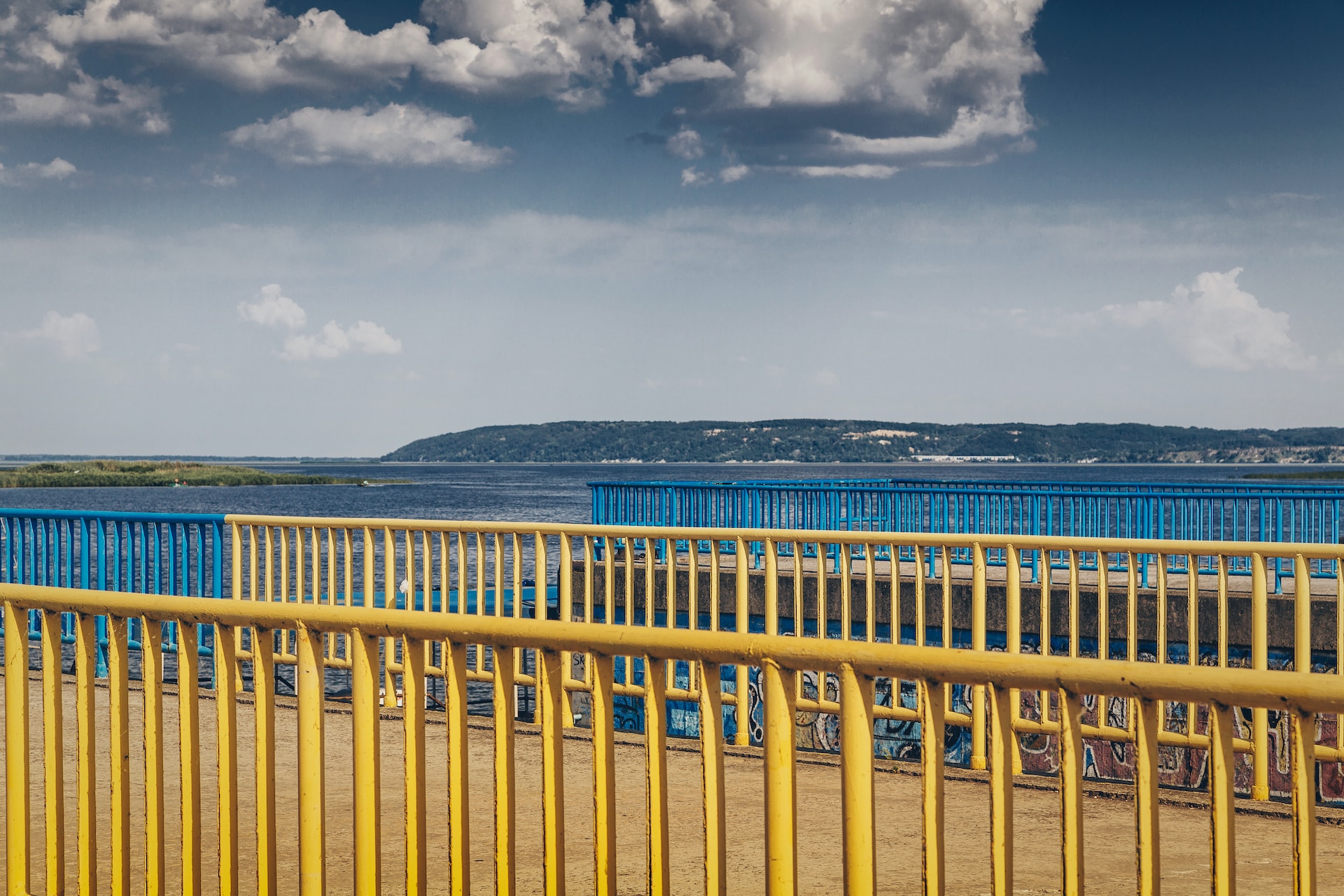Naftogaz of Ukraine is making a move to turn into one of the vital gas suppliers of the European Union if it manages to overcome several significant issues and draw enough investment amidst the ongoing war.
As it seems, NJSC Naftogaz of Ukraine (Naftogaz), the state-owned mining, transportation, and oil and gas company founded in 1998, plans to become a major player in the European gas market, focusing on its upstream development and production. The company is looking for foreign investments to uphold the projects in new prospective areas, supposedly rich in natural gas. The decision comes as a substitute for Naftogaz’s previous business of transferring Russian gas, which is dwindling yearly and not least because of the war. However, there are certain concerns if Naftogaz manages to pull it off.
Throughout its history, Naftogaz played the crucial role as the distributor of the energy resource produced by PJSC Gazprom, a Russian majority state-owned corporation, which supplied gas to Europe through Ukrainian territory. Although the volume of gas transition dropped yearly, Naftogaz remained the primal distributor of Russian gas to Europe until the late 2010s. With Russian Federation actively developing alternative routes such as the Nord Stream, Yamal-Europe, and Turkish Stream, a rise in prices, and growth of the political tensions between Russia and Ukraine, Naftogaz was constantly looking for independent, more reliable, and profitable ways of gas sources. The solution comes in the form of increased and more innovative domestic development. With the resources at its disposal, Naftogaz aims to become the European primary energy hub, able to supply more than 15 countries at once, and it has some points to back its claims.
Firstly, the integration of Ukraine into Europe facilitates most business processes. For example, the Free Trade EU-Ukraine Agreement resulted in EUR 52.4 billion in volumes in 2021. Secondly, Ukraine has a granted EU membership candidacy status (no dates on the actual membership but a clear roadmap ahead). Finally, Ukraine’s power system is synchronized with the European Continental Network of Electricity Transmission System Operators ENTSO-E, creating an ever-stronger bond with the EU and easing the energy transfer.
Naftogaz aims to become the European primary energy hub, able to supply more than 15 countries at once, and it has some points to back its claims.
Domestically there is also something to brag about. Namely, Naftogaz enjoys a leading market position as the sole gas supplier to the population, heat producers, and the public sector. The company serves 86.7% of all Ukrainian households and possesses 70% of total Ukraine gas production and proven and probable reserves. Moreover, Ukraine is number one in Europe by underground gas storage capacity. And eventually, Naftogaz argues that it has 80% of all its gas storage facilities near the EU border, in the Carpathian region, implying it can supply the much-needed energy carrier almost immediately.
However, Naftogaz plans wisely for the future and takes stakes in the so-called Dnieper-Donets super basin, a 13 thousand square km area in the North-West part of Ukraine. Naftogaz believes a new unconventional play, a specialized evaluation, and extraction in the region to be Ukraine’s most promising upstream project. At the same time, its key parameters are comparable to unconventional hydrocarbon resource basins of the United States and Canada. What is so special about this place for Naftogaz? At least 293 billion cubic meters (bcm) of gas and other potential and actual resource areas make Ukraine second in Europe after Norway by resources and third by reserves following Norway and the United Kingdom.
And that’s where “ifs” and “buts” pop out. The first one is whether the figure of prospective play is accurate with estimated ultimate recovery based only on the company’s internal unpublished reports. There are signs that Naftogaz tends to overstate the actual volumes sometimes. For example, this summer, Naftogaz announced that, since the start of injection season in 2023, 2.5 bcm of gas was already sent to Ukrainian underground storage facilities amounting to 11.7 bcm total. However, according to the International Energy Agency, only 1.5 bcm of gas was stored at the end of the second quarter, amounting to 10.5 bcm. As it seems, the gas production in Ukraine has been reduced to the point that Naftogaz asked the United States Agency for International Development to help with heating gas in November 2022.
Even if the potential figures in the Dnieper-Donets basin and some other areas are accurate, they still need to be developed. Naftogaz plans to start producing some of the wells in the first or second quarter of 2024, and the company seeks investment for the development. For instance, methanol plants must provide a secure supply of critical chemicals for natural gas production. Naftogaz has outlined Lviv and Poltava sites as candidates for these methanol plants and is looking for USD 20-75 million in equity or debt financing for conventional or green facility construction. Therefore, the actual production volumes and terms are to be determined depending on the investment partners and their contribution.
At least 293 billion cubic meters (bcm) of gas and other potential and actual resource areas make Ukraine second in Europe after Norway by resources and third by reserves following Norway and the United Kingdom.
And finally, the geopolitical situation is affecting not only Ukraine but the world too. Russia’s invasion of Ukraine triggered a global energy crisis, leading to changes in the natural gas market and its structure. With Russia cutting short its supplies to the EU, gas price volatility, and approaching winter, the importance of filling the storage up to the top has increased manifold. Demand for long-term contracts with non-Russian suppliers is evident, opening an opportunity for Ukraine to step into the niche. However, it takes work. One of the wealthiest gas areas, the Black Sea offshore, with 299 bcm capacity, is temporally blocked and on hold due to the war. Moreover, the Ukrainian ports are blocked now, limiting Naftogaz’s transportation capabilities. Top that with the already mentioned lack of production and infrastructure facilities and investments, and you get the idea of a problem that Naftogaz is facing right now. Owning vast resources, it has yet to devise a solution to implement the upstream projects with that much gas for the EU customers. And let’s remember that Naftogaz also needs to serve the domestic market.
Naftogaz is already taking diverse approaches to handling the situation. For example, it purchases gas from private gas producers and traders via the Ukrainian Energy Exchange to supplement its shortages. To get the prospective areas, including the Dnieper-Donets basin, fully operational, Naftogaz opts to attract investment from international banks, funds, or private venture professionals. It has even undergone some top management changes to achieve this goal and appointed Oleksiy Chernyshov (Chernyshov) as the new CEO in November 2022. Chernyshov was a Minister for Communities and Territories Development in the Ukrainian government for over two years. Still, more importantly, he has a successful background as a founder and partner in several investment companies, which makes him a suitable person for Naftogaz, capable of obtaining a “money injection.”
Naftogaz has bold and long-term plans to become a more independent, reliable, and significant gas supplier for the European Union. The timing may seem perfect: Europe is looking for non-Russian energy sources, and storage must be filled before the winter strikes. Moreover, Ukraine possesses vast gas reserves waiting to be produced. Still, Naftogaz needs more power to do it independently and is struggling to find partners for the project, which might come at a high price. And the ongoing war is not helping at all, as the unstable situation may scare off the potential partners. Considering all the circumstances, it might turn out that Naftagaz’s plans, if not canceled, will be delayed. But it may be a practical solution that could reshape the European energy market when they come to fruition.




